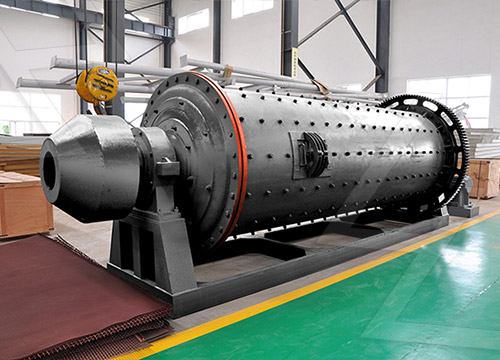A ball mill is a common grinding machine used in mining, metallurgy, and other fields for grinding and blending materials. It utilizes steel balls as grinding media to effectively reduce the particle size of ore and other materials for subsequent processing. In this article, we will discuss the specifications of a typical ball mill used for grinding ore.
Dimensions and Capacity:
Ball mills come in various sizes, ranging from laboratory-scale models to large industrial mills. The dimensions of a ball mill are typically specified by the length and diameter of the cylinder. For example, a common laboratory-scale ball mill may have a cylinder length of 400-500 mm (16-20 inches) and a diameter of 300-400 mm (12-16 inches).

The capacity of a ball mill refers to the maximum amount of material it can process within a given time frame. It is often specified in terms of the tonnage of ore that can be ground per hour. The capacity can vary significantly depending on factors such as the size and hardness of the ore, the desired product fineness, and the mill’s design.
Motor Power:
The motor power of a ball mill is an important parameter that determines its grinding capacity. It is typically specified in kilowatts (kW) and depends on factors such as the mill size, the type of ore being processed, and the desired product size. Higher motor power generally translates to higher grinding efficiency and throughput.
Rotation Speed:
The rotation speed of the ball mill is another critical parameter that affects the grinding process. It is usually specified in revolutions per minute (RPM). The rotation speed determines the impact force exerted by the grinding media on the ore particles. A higher rotation speed results in more vigorous grinding action but may also lead to increased wear of the mill liners and grinding media.
Grinding Media:
The grinding media in a ball mill are typically steel balls. The size, composition, and quantity of the grinding media can vary depending on the ore being processed and the desired product size. Generally, larger balls are used for coarse grinding, while smaller balls are employed for finer grinding. The grinding media should be selected carefully to ensure optimal grinding efficiency and minimal wear.
Lining Material:
The inner surface of the ball mill cylinder is usually lined with wear-resistant materials to protect it from abrasion caused by the grinding media and the processed ore. Common lining materials include rubber, metal alloys, and composite materials. The choice of lining material depends on factors such as the hardness and corrosiveness of the ore, the operating conditions, and the desired service life.
Control System:
Modern ball mills are equipped with advanced control systems to optimize the grinding process and ensure safe operation. These control systems can regulate parameters such as mill speed, feed rate, and discharge fineness. They may also incorporate features for monitoring mill conditions, such as temperature and vibration, to detect abnormalities and prevent equipment damage.
